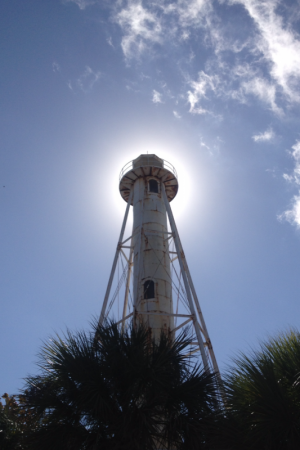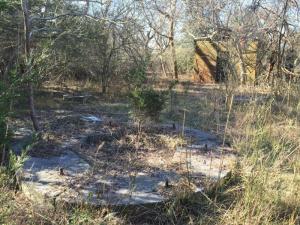Jimmy Phillips works on boats and motors at his marine business in Lewes, on a piece of high ground between the Broadkill River and the Great Marsh. Phillips Marine. Sometimes, when he puts down screwdriver or wrench and stands beside an open outboard, its cowling removed and its inner workings exposed, he wipes grease from his hands and looks at nearby Green Hill. An island it is, separated by a thin piece of salt marsh from the River Park property where Phillips Marine is located.
With pines, lots of scrub growth, stunted oaks and hackberries, Green Hill in most ways is not unlike the many islands up and down much of the Delaware Bay shoreline in the vast expanses of marsh. Songbirds like the islands with their plentiful seed from wild grasses and berries on cedars and other salt-tolerant shrubs. Sharp-shinned and Cooper’s hawks swoop through occasionally and pick off a dove or a mockingbird for breakfast. Ospreys, just returning now from their winter migrations for the coastal nesting season, stake out their claims in dead trees on the edges of the islands, while solitary blue herons stand still as statues in shallow potholes teeming with fat mummichogs. With the steady insistence of survival, the herons suddenly break their quiet meditations, unleashing the coiled power of their long necks, guiding their sharpened bills with narrowed eyes, spearing small fish with deadly accuracy to nourish nature’s ages-old cycle of feeding and procreation.
Browned by winter, the marsh will soon begin greening with new grasses, and the leaves will begin returning to the trees of Green Hill which give it its name. The other marsh islands will also begin greening, but there is one important difference between them and the island known as Green Hill.
One day last week I was on the phone with Jimmy, talking about prepping Nellie Lankford for the new season.
“We just came back from Florida,” he told me. “Three weeks of driving: Savannah, the mountains of Carolina, Key West. We had a great time. Now it’s time to get back to work.”
On the west coast of Florida, near Gasparilla Island and Boca Grande, Jimmy and his wife, Monica, relaxed one day in the sand on a beach. In the background stood a singularly tall, white tower with a light on top. Many decades ago, in the late 1800s and early 1900s, that same steel cylinder rose high above the trees of Green Hill, property of the federal government. Known as the Green Hill Light, the fuel-oil powered beacon atop the black-painted cylinder helped guide sailing, steam and early fuel-fired ships into the safety of the Delaware Breakwater off the point of Cape Henlopen. Its light served as the rear range for the navigational aid. The front light for the range stood at a lower height on the rocks of the breakwater. Captains on inbound vessels would line up, vertically, the front range light with the rear range light from several miles out and know they were on course for finding refuge from storms behind the breakwater.
Light relocated to Florida
As ships grew larger and drew greater drafts, and shoaling around the breakwater caused another set of problems, officials realized they had to build another breakwater, the Harbor of Refuge, farther offshore and in deeper water. The Delaware Breakwater became obsolete for commercial shipping purposes, the range lights went dark, and the government abandoned the complex built to support operation of the rear range at Green Hill. Members of the Fisher family took up residence there, but through the years, deterioration and neglect eventually took their toll, as is the way with nature.
The rear range light, though, still has life in it. The government contracted for its relocation to Florida in the mid-1920s for new duty along the gulf of Mexico. Men worked with heavy equipment to loosen the tall cylinder from its concrete supports, lowered it from vertical to horizontal, trailered it into Lewes and loaded it aboard a specially configured set of flatbed rail cars for its journey south. It was reassembled in Florida in 1927 in Boca Grande to once again serve as a rear range light.
During their Florida visit, Jimmy and Monica determined that the Green Hill Light served its original purpose in Florida for many years before being converted for simple lighthouse duty.
It continues to serve today as the Gasparilla Lighthouse.
Jimmy takes a break from his work occasionally and wanders over to Green Hill to pick his way through the ruins.
“The granite blocks that the light’s supports were bolted to are still there,” said Jimmy. “It’s an interesting history, and it was fun to discover that connection to Lewes when we were in Florida.”
For a town that values history so much, the Green Hill Light ruins remain a diamond in the rough for Lewes. Vandals and graffiti artists have just about exhausted their possibilities. Nature, though, with its persistent cycles, continues to crack and pull, level and disintegrate in its inexorable efforts to erase man’s incursions.
























































